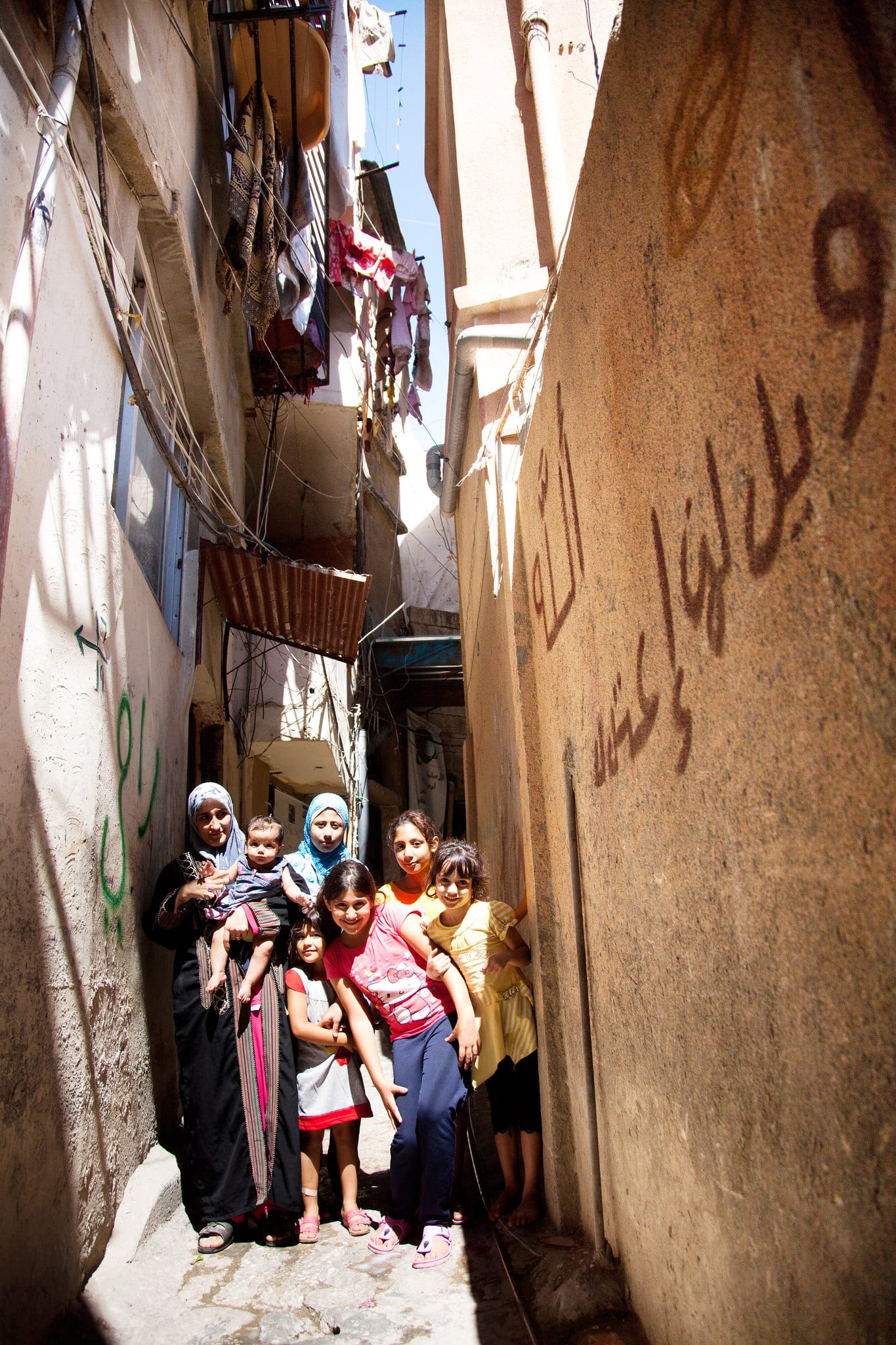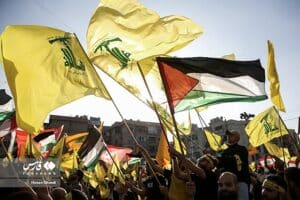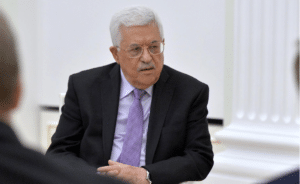Photo: Mother with her children in front of their house in Ein el-Hilweh refugee camp – ©STARS/Kristian Buus
At least ten people were killed after violence broke out between several rival groups in Lebanon’s Ein el-Hilweh Palestinian refugee camp, more than 20 people were injured. The bloodshed follows after violence that broke out in July. Then, 9 people were killed and more than 20,000 people, including 12,000 children, had to flee the camp when fighting broke out between Fatah supporters and Islamist fighters. The ongoing violence shows that the friction that exists between the different Palestinian groups is not limited to the Palestinian territories, but also occurs in countries with large numbers of Palestinian refugees.
History of Ein el-Hilweh
Ein el-Hilweh is the largest Palestinian refugee camp in Lebanon and was created in 1948 to accommodate Palestinians expelled by Israeli forces during the founding of Israel. The camp, which has about 63,000 residents, is walled and administered by several Palestinian parties. The Lebanese army does not enter Ein el-Hilweh, but does supervise construction materials entering the camp. The resulting high degree of self-governance creates friction between various Palestinian parties operating in the area. Because of the lack of oversight from the Lebanese authorities, conflicts can quickly spiral out of control and turn into acts of violence.
The camp has a long history of clashes, with violence occurring not only from within, but also from the outside. Ein el-Hilweh was, for example, bombed by the Israeli army in 1974 during the Lebanese civil war. In 1982, the camp was bombed again by the Israelis during their invasion of Lebanon. In addition, in the 1990s, various Palestinian groups fought with the Lebanese army for control over the settlement. This struggle continues, but today it manifests itself mainly in inter-party fighting between Palestinian factions.
Violent clashes
The disturbances of recent months are mainly linked to tensions between supporters of the Fatah movement and fighters from various Islamist groups. The secular Fatah movement has gained significant influence in Ein el-Hilweh in recent years, and this has caused unrest and mistrust among the Islamist groups. The assassination of Abu Ashraf al Armoushi, general of the Fatah movement, inside the camp, caused a boiling point in the conflict. Violence between the parties flared up to such an extent that Najib Mikati, Lebanon’s Prime Minister, threatened an army raid on the camp. He called the fighting, in which a Lebanese military base was also hit by a mortar, a violation of Lebanese sovereignty. In a telephone conversation he had after the violence broke out with Mahmoud Abbas, president of the Palestinian Authority, he urged for a solution to stop the fighting.
Fighting between Palestinian groups has continued to flare up in recent days. The wide variety of groups in the camp makes the situation very unpredictable. However, the Lebanese authorities are very alert and have already taken several measures to contain the conflict. For example, several roads have been closed and Lebanese officials have held talks with Palestinian officials to reach a truce. Meanwhile, the humanitarian situation in the camp, which was already very bad, has deteriorated further. People who want to flee the camp are unable to do so because it is too dangerous for them to leave their houses.
In addition, there are fears that a similar situation as in 2007 will occur. Then, the Nahr al-Bared camp was severely damaged. This settlement, then the second largest Palestinian refugee camp, was almost completely destroyed in a 15-week operation resulting in 400 deaths and a large group of homeless refugees. Residents of Ein el-Hilweh fear a similar scenario, but are trapped. Despite the frantic efforts of the Lebanese authorities, unrest remains and is likely to continue for the foreseeable future.
Written by Ype Verhagen



